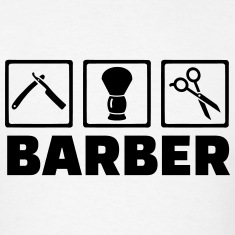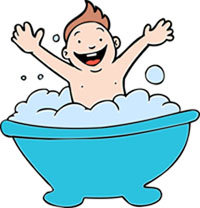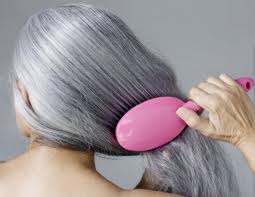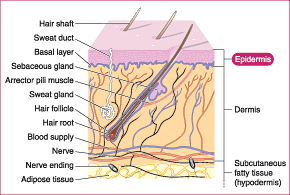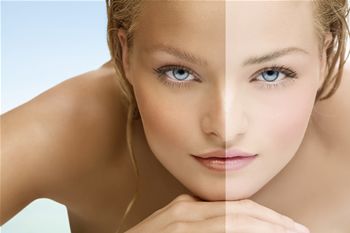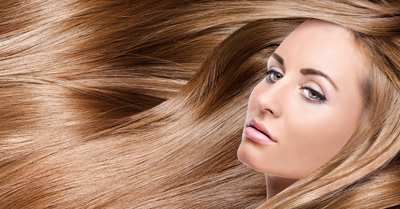Indiana Cosmetology State Board Quiz! Test

Here we bring you a quiz on the Indiana Cosmetology State Board exam. Cosmetology is an interesting field, and certification guarantees you understand different types of skin and hair and how to improve their conditions. Do you think the knowledge you have at this point is enough to help you pass the exam and get that certificate? This quiz will help you shed some light on that. Give it a try and polish your skills!
- 1.
From what latin word is the term barber derived?
- A.
Barberos
- B.
Barbara
- C.
Barba
- D.
Baraba
Correct Answer
C. BarbaExplanation
The term "barber" is derived from the Latin word "barba," which means "beard." This makes sense as barbers traditionally specialize in cutting and grooming facial hair, including beards. The other options, "barberos," "barbara," and "baraba," do not have any connection to the term "barber" or its meaning.Rate this question:
-
- 2.
What is the daily maintenance of cleanliness and healthfulness through certain sanitary practices?
- A.
Direct care
- B.
Body conscious
- C.
Personal hygiene
- D.
Personal care
Correct Answer
C. Personal hygieneExplanation
Personal hygiene refers to the daily maintenance of cleanliness and healthfulness through certain sanitary practices. It involves taking care of one's body by regularly washing hands, bathing, brushing teeth, and maintaining cleanliness of clothes and surroundings. These practices help prevent the spread of germs, infections, and diseases, ensuring overall well-being and good health.Rate this question:
-
- 3.
What type of hair with canities does a client has?
- A.
Fine, straight hair.
- B.
Bleached hair.
- C.
Extremely curly hair.
- D.
Gray hair.
Correct Answer
D. Gray hair.Explanation
The correct answer is gray hair because canities refers to the graying of hair. Gray hair is characterized by a loss of pigment, resulting in a silver or white color. The other options - fine, straight hair, bleached hair, and extremely curly hair - do not specifically refer to the graying of hair.Rate this question:
-
- 4.
What facial type would you want to give width to the forehead?
- A.
Square.
- B.
Triangular.
- C.
Diamond.
- D.
Round.
Correct Answer
B. Triangular.Explanation
The triangular facial type would want to give width to the forehead. This is because the triangular face shape typically has a narrower forehead compared to the jawline. Adding width to the forehead can help balance out the proportions of the face and create a more symmetrical and harmonious appearance.Rate this question:
-
- 5.
What short rod-shaped bacteria: tetanus, typhoid, TB, diphtheria?
- A.
Bacilli
- B.
Diplococci
- C.
Streptococci
- D.
Staphylococci
Correct Answer
A. BacilliExplanation
Bacilli are short rod-shaped bacteria, which matches the description given in the question. Tetanus, typhoid, TB, and diphtheria are all caused by bacilli, making it the correct answer. Diplococci, streptococci, and staphylococci are not rod-shaped bacteria, so they are not the correct answer.Rate this question:
-
- 6.
What it the Deepest layer of the epidermis, the basal cell layer, is also known as what?
- A.
Stratum Germinativum
- B.
Stratum corneum
- C.
Corneum
- D.
Subcutaneous
Correct Answer
A. Stratum GerminativumExplanation
The correct answer is Stratum Germinativum. This is the deepest layer of the epidermis, also known as the basal cell layer. It is responsible for producing new skin cells and contains melanocytes, which produce melanin. The other options, such as stratum corneum and corneum, refer to the outermost layer of the epidermis, while subcutaneous refers to the layer beneath the dermis.Rate this question:
-
- 7.
What are the tiny granules of coloring matter deposited in cells that provide the skin with its color?
- A.
Melanin
- B.
Subcutaneous
- C.
Medulla
- D.
Henna
Correct Answer
A. MelaninExplanation
Melanin is the correct answer because it is the pigment responsible for the color of the skin. It is produced by specialized cells called melanocytes and is deposited in the cells of the skin, hair, and eyes. Melanin helps protect the skin from the harmful effects of ultraviolet (UV) radiation from the sun, and it determines the color of an individual's skin, hair, and eyes.Rate this question:
-
- 8.
The three main layers of the hair shaft are the cuticle, cortex, and what?
- A.
Melanin layer
- B.
First phase
- C.
Medulla Layer
- D.
Cortex Ad
Correct Answer
C. Medulla LayerExplanation
The three main layers of the hair shaft are the cuticle, cortex, and medulla layer. The cuticle is the outermost layer that protects the hair, while the cortex is the middle layer responsible for the hair's strength, elasticity, and color. The medulla layer, located at the center of the hair shaft, is a soft, spongy region that may or may not be present in all hair types. It is not as essential as the cuticle and cortex, but it can play a role in the overall structure and characteristics of the hair.Rate this question:
-
Quiz Review Timeline +
Our quizzes are rigorously reviewed, monitored and continuously updated by our expert board to maintain accuracy, relevance, and timeliness.
-
Current Version
-
Mar 21, 2023Quiz Edited by
ProProfs Editorial Team -
Jan 19, 2016Quiz Created by
Phynex08
 Back to top
Back to top



